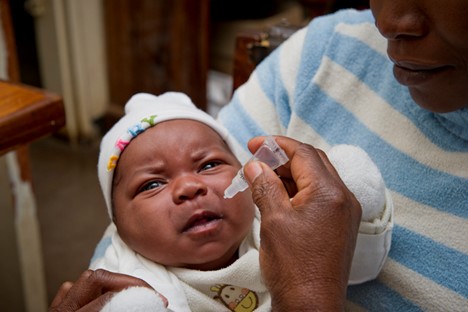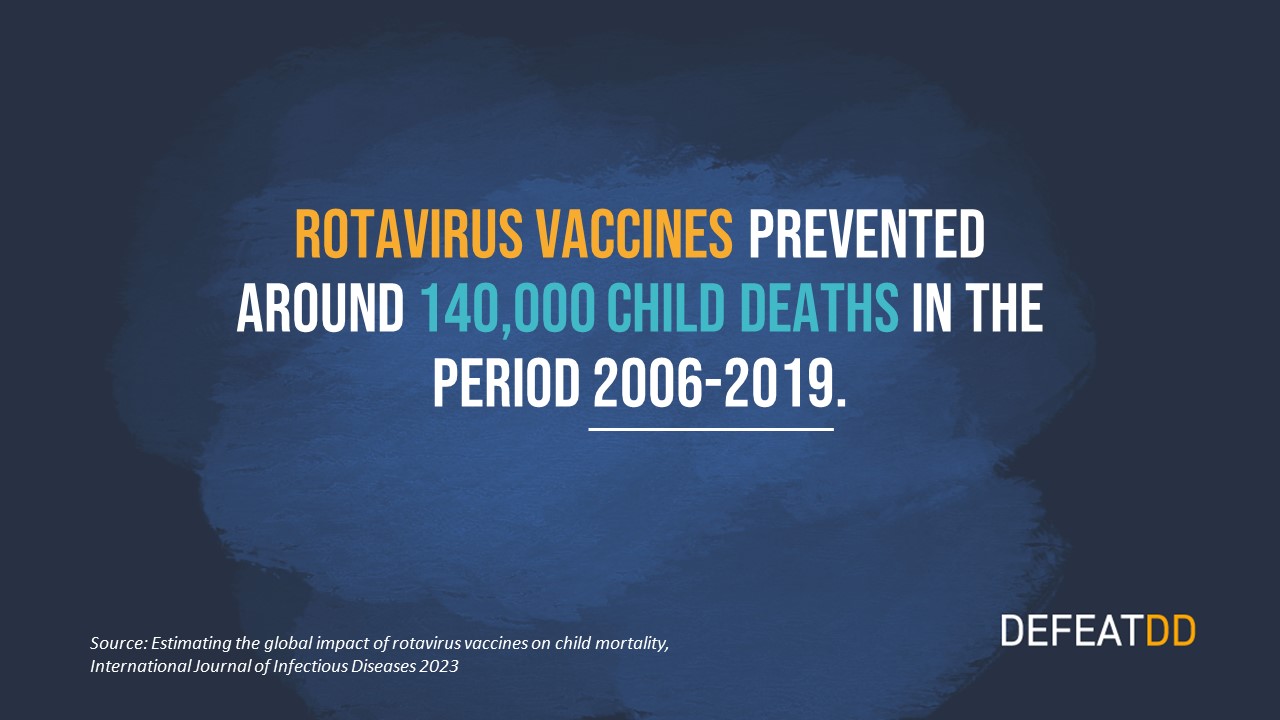
Findings from more than a decade of rotavirus vaccine roll-out

Baby Vusi, here with his mother, Teresa, received the oral rotavirus vaccine during the 2012 rotavirus vaccine pilot in Lusaka Province, Zambia. In 2013, Zambia introduced the vaccine nationwide. Hear from Teresa about why she thinks all caregivers should ensure their children are vaccinated against rotavirus.
Late last year, an important paper in in the field of global child health went live: “Estimating the global impact of rotavirus vaccines on child mortality.”
If you’re like us, anything that happened in 2023 already feels like ancient history. Don’t worry. Here we have an overview of the findings and some key takeaways for child health champions as we plan for the year ahead.
What sets this paper apart from other rotavirus vaccine impact papers?
In the early years of rotavirus vaccine availability, researchers used modeling estimates to prospectively project impact. Now that we have more than a decade of real-world use, researchers are able to use the data to retroactively estimate impact. This analysis looked from the timeframe when the vaccines first became available in 2006 up through 2019 (before pandemic interruptions).
Have the vaccines had an impact on the global rotavirus burden?
 Thanks to rotavirus vaccines, an estimated 140,000 children’s lives were saved from rotavirus infection through 2019. We can expect more good news in the years to come, especially with Nigeria’s introduction in 2022. Rotavirus vaccines represent a huge step forward in the fight against diarrhea mortality. And as more countries commit to introducing rotavirus vaccines, we can expect the number of lives saved to grow.
Thanks to rotavirus vaccines, an estimated 140,000 children’s lives were saved from rotavirus infection through 2019. We can expect more good news in the years to come, especially with Nigeria’s introduction in 2022. Rotavirus vaccines represent a huge step forward in the fight against diarrhea mortality. And as more countries commit to introducing rotavirus vaccines, we can expect the number of lives saved to grow.
The analysis focused on a period when rotavirus vaccines were gradually being introduced; South Africa became the first African country to introduce the vaccine in 2011. As recently as 2019, the final year of the analysis, high-burden, high-population countries like Nigeria had not yet introduced the vaccine and coverage was still fairly low in India (around 50%). Introduction and coverage in these countries stand to greatly increase the number of lives saved. Researchers estimated that if all countries used rotavirus vaccines at the same coverage as other infant vaccines, more than one-third of rotavirus deaths could be prevented.

While this analysis looks solely at lives saved, we know that the true benefit of rotavirus vaccines are even greater for the difference they make to families, health systems, and economies. In countries where rotavirus vaccines have been introduced, reduced rates of children being hospitalized with severe diarrhea are apparent, such as in these studies from Rwanda and Malawi.
What’s next for rotavirus vaccines?
The major takeaway from these findings is the need to continue to prioritize expanded coverage for this lifesaving vaccine to reach its full potential impact. At the same time, investing in the development of next-generation rotavirus vaccines with higher efficacy and more durable protection in lower-income settings could help achieve even greater impact. For reasons scientists are still trying to unravel, oral vaccine effectiveness is lower in the children who could benefit from them most: yet another reason adequate nutrition and access to WASH should be part of a comprehensive approach to diarrhea.
Happily, all diarrhea-related deaths have dropped these past years because other tools have helped close the gap. For example, greater access to oral rehydration solution is one major reason fewer children are dying (though we still have work to do here, and even more so for its companion diarrhea treatment tool, zinc). Rotavirus vaccine can’t solve the global crisis of diarrheal disease on its own; the entire suite of diarrhea prevention and treatment tools must also keep pace.

Rotavirus is called a “democratic virus,” because it is widespread across the globe, and most children will fall ill with it at some point in their lives. But the consequences are far from democratic; rotavirus is most dangerous in places where healthcare and rapid access to tools like oral rehydration solution is lacking. Rotavirus vaccine will continue to help level the field, but only if national policymakers continue to invest in their delivery.


